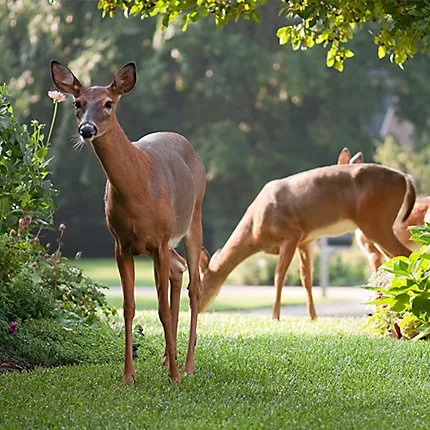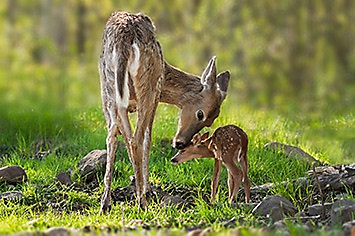Deerly Beloved
Let’s set the record straight. I am not a hunter. I have no problem with hunting. It’s just not something I choose to do. I’m the guy who catches and carries spiders and pillbugs back outdoors, and I’ve done so all my life.
However, Lynn and I stayed at a conference down in the Hill Country 25 years ago and we got to witness the rapid destruction deer did to lovely landscapes and gardens. I counted a herd of 27 deer in one person’s front yard in a suburb of Austin. There was major damage done in just a few minutes, and that doesn’t mention the hazard deer present to passing traffic.

So, what’s a person – a gardener – to do? How can you discourage their visits into your surroundings?
I’ve been using Havahart® Humane traps to capture live armadillos and raccoons so they can be released in U.S. Corps of Engineers flood plain land away from homes and farmland miles away from our house.
Havahart® has a legacy of helping us deal with unwanted animals, so when they recently emailed me their tips on dealing with deer (see link below), I paid close attention.
Some of deer’s destructive activities…
• Feeding on (as in “devouring”) low shrubs and small or new trees, fruit, flowers and vegetables and turf.
• Bedding down in gardens or landscape beds, also in lawn areas.
• Rubbing antlers against trunks of trees until they are stripped bare (usually fatal to the trees).
• Over-using the lawns and beds as restroom facilities.

Havahart’s® (and others’) suggestions to discourage deer…
• Keep shrubs, low trees and undergrowth trimmed to reduce their places to hide.
• Mow frequently to reduce their feed source, also to take away their places to bed down.
• Harvest fruit and vegetables as early as possible without sacrificing quality of the finished product.
• Install motion-detecting sprinklers and electronic repellents. Do your homework beforehand to check out performance claims.
• Of course, install stout, woven-wire deer fencing to 8 to 9 ft. tall. These are Olympic jumpers!
• Avoid planting species that deer prefer. Concentrate instead of types they tend to leave alone.
Note Number 1…
In prior issues of e-gardens I have posted this outstanding information from PLANTAnswers. That is the website maintained by my friend Dr. Jerry Parsons, Extension Horticulture Professor Emeritus from Texas A&M. Jerry in turn credits the list to his friend and associate Forrest Appleton. It is a compilation of the best deer-resistant plants for Texas landscapes.
Note Number 2…
I compiled most of this story from a release from Havahart®. If you’d like to read their story in its entirety, here is a link directly to it.
